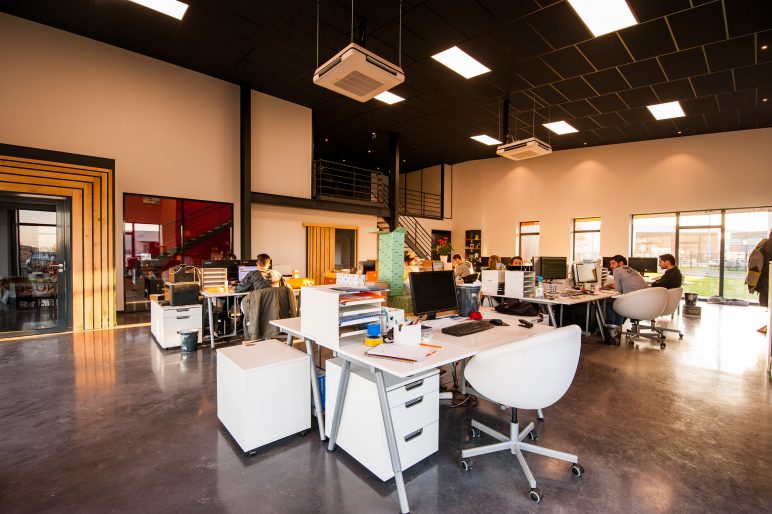Employees can be exposed to different pathogens each day. With the rise of COVID-19, employees and other building occupants are more concerned with their well-being and avoiding illness than ever before. As we continue to make strides toward a post-pandemic world, businesses must prepare for the return of other viruses such as norovirus and influenza. While this year’s cold and flu season had the lowest number of recorded cases,[1] experts are already predicting increased flu cases for 2022.[2]
The Occupational Safety and Health Administration (OSHA) revised its Protecting Workers: Guidance on Mitigating and Preventing the Spread of COVID-19 in the Workplace document. It included details on measures for limiting the spread of COVID-19, which can be applied to other illness prevention strategies as cases continue to decline in the U.S.
Key control measures
Social distancing was one of the most important safety measures to reduce the spread of COVID-19 during its peak. Now that most places are returning to work and removing social distancing protocols, it’s important to stay on top of facility cleanliness.
Other key control measures that can help mitigate the spread of illness include:
- Cleaning and disinfecting routinely: Implementing a robust cleaning program that includes cleaning high-touch surfaces such as doorknobs, elevator buttons, light switches, handrails and keyboards regularly is critical. Increasing cleaning frequency helps address the buildup of germs on high-touch surfaces. Offering disposable disinfecting and sanitizing wipes gives employees quick and readily available cleaning options.
- Reviewing product efficacy: Carefully review the manufacturer’s instructions and efficacy claims on the product label when purchasing cleaning chemicals, as some may have different dwell times and deactivate or kill different pathogens. Consider using products that undergo rigorous U.S. Environmental Protection Agency (EPA) testing to ensure they meet the standardized rate of reducing the number of bacteria and viruses.[3] For COVID-19, review the EPA’s List N to see if a disinfectant is effective against SARS-CoV-2, the virus that causes COVID-19.
- Providing hygiene products and educational materials: Providing necessary supplies for employees to practice good hygiene throughout the workday is important. For example, installing touchless soap and paper towel dispensers allows employees to wash their hands and reduce transmission from high-touch surfaces. Handwashing with soap and water for 20 seconds is key to prevent germs from spreading, but facilities should also provide touchless hand sanitizer dispenser stands with at least 60 per cent ethanol in case soap and water are not readily available.[4]
Offering educational materials such as posters that encourage hand hygiene will serve as a great reminder for employees to stay on top of their own personal hygiene. These should be placed near building entrances, breakrooms, restrooms, and other workplace areas. Reminders should highlight key times for employees to wash their hands which include before and after work, during breaks, before and after eating, after blowing their nose, coughing or sneezing, after using the restroom, and after touching surfaces[5].
It’s critical to develop a comprehensive cleaning and hygiene program even as COVID-19 cases continue to decline. Norovirus and influenza will return and pose a risk to employees and customers. Keeping up with routine cleaning and disinfecting, reviewing product efficacy, and providing hygiene products and educational materials can help reduce the spread of viruses and employee absences.
John Engel is the director of marketing for the Facility Services division of Cintas. John has more than 13 years of industry experience and is currently responsible for product line management and development. For more information about facility services offerings from Cintas, visit cintas.com/facilityservices
[1] https://www.healthline.com/health-news/while-covid-19-is-raging-flu-cases-remain-unusually-low
[2] https://www.nbcnews.com/health/health-news/after-year-virtually-no-flu-scientists-worry-next-season-could-n1266534
[3] https://www.epa.gov/coronavirus/whats-difference-between-products-disinfect-sanitize-and-clean-surfaces









